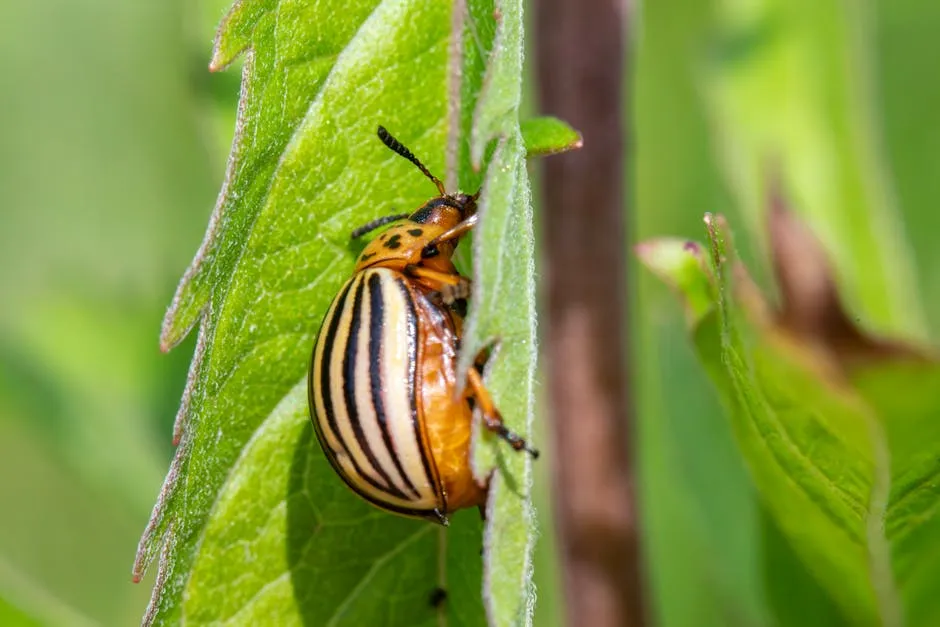

Fall Florida Blueberry Plants: Cultivation and Care Guide
Introduction
Blueberry cultivation in Florida is thriving, especially in fall. The state’s warm climate allows for unique growing conditions. Florida’s subtropical weather means blueberries can flourish nearly year-round. New cultivars are extending the growing season, opening doors for innovative farming opportunities.
If you’re looking to start your own blueberry journey, consider planting Southern Highbush ‘Emerald’. These beauties not only yield sweet berries but also bring a sense of achievement to your gardening endeavors. Just imagine the taste of fresh blueberries in your morning cereal!

Summary and Overview
Blueberries have a rich history in Florida, gaining popularity since the 1970s. Two main types thrive here: Southern Highbush and Rabbiteye. Southern Highbush varieties suit southern areas, while Rabbiteye grows well in the north.
Florida’s climate significantly impacts flowering and fruiting schedules. With warmer winters, many cultivars bloom earlier than in cooler regions. Recent research has focused on advancing fall blueberry production. Growers can tap into this off-season market, taking advantage of higher prices as imports dominate. Expanding fall production not only boosts profits but also supports local agriculture.
To ensure your blueberries thrive, using the right soil amendments is key. An Organic Peat Moss can help improve your soil’s structure and acidity, ensuring your plants get the nutrients they need for a bountiful harvest.

Understanding Blueberry Varieties
Southern Highbush vs. Rabbiteye
In Florida, two primary blueberry types thrive: Southern Highbush and Rabbiteye. Understanding their features can help you choose the right variety for your garden.
Southern Highbush blueberries are hybrids. They need about 300 to 600 chilling hours, making them ideal for southern areas of Florida. These plants bloom earlier and produce larger, sweeter berries. Varieties like ‘Emerald’ and ‘Jewel’ are popular for their high yields and flavor.
On the other hand, Rabbiteye blueberries are well-suited for northern Florida. They require around 450 to 1,000 chilling hours, making them more resilient to cooler winters. Varieties such as ‘Tifblue’ are known for their hardiness and adaptability.
Market trends show a growing preference for Southern Highbush due to their early harvest and high quality. However, Rabbiteye varieties remain popular for their drought tolerance and lower maintenance. Both types offer unique benefits, catering to different grower needs.

Best Practices for Planting in Fall
Site Selection
Choosing the right site is crucial for blueberry success. Healthy soil and proper drainage are essential. Aim for well-drained, acidic soil with a pH between 4.0 and 5.5. You can amend soil with pine bark or peat to improve acidity and organic matter.
Sunlight exposure is equally important. Blueberries thrive in full sun, needing at least six hours of sunlight daily. Avoid planting near tree roots or structures that may block sunlight.
When planting, space plants about four to six feet apart. This spacing allows for good airflow and prevents disease. Proper site selection sets the foundation for a fruitful blueberry harvest in Florida’s unique climate.

Timing and Techniques
Fall is a great time to plant blueberries in Florida. The ideal window is from mid-September to mid-November. This timing allows plants to establish roots before the colder months arrive.
Preparing the soil is crucial for healthy growth. Start by testing the pH, aiming for a level between 4.0 and 5.5. Amendments like Pine Bark Mulch or peat moss can enhance acidity. Mix these into the top 12 inches of soil for best results.
When planting, ensure young plants are placed at the same depth as they were in their nursery containers. Gently pack the soil around their roots to eliminate air pockets.
Mulching is vital. A 3-inch layer of pine straw or bark helps retain moisture and suppress weeds. Consistent watering is also crucial, especially during dry spells. Aim to keep the soil consistently moist, but avoid waterlogging.
These techniques will set you up for a thriving blueberry harvest come spring. And don’t forget to grab a Garden Trowel for planting; it’s a game-changer for digging holes!

Fall Management Practices
Irrigation Needs
As fall arrives, blueberry irrigation needs change. Cooler temperatures and shorter days mean plants require less water than during the summer months. Monitor your irrigation schedule closely.
Adjust your watering routine to reflect the reduced needs. In September, blueberry plants may use around 60% of the water they needed in August. This trend continues as temperatures drop further into October and November.
Effective moisture management is important to promote healthy root systems. Use Soil Moisture Sensors to gauge when to water. This technology lets you know when to irrigate without overdoing it.
Regularly check soil moisture levels to ensure your plants stay hydrated. Consistent watering during this transition keeps your blueberries healthy and ready for the upcoming growing season.

Fertilization Strategies
Fertilization is crucial for your blueberry plants in the fall. It helps them prepare for winter and supports strong growth for the next season. Blueberries have specific nutrient needs, especially during this time. They require nitrogen, phosphorus, and potassium to thrive.
Organic fertilizers, like compost or well-rotted manure, are excellent choices. They enhance soil health while providing essential nutrients. You can also consider using a Organic Fertilizer for Acid-Loving Plants. This will ensure your blueberries get the right nutrients without harming their sensitive roots.
Timing is key when applying fertilizers. Aim for early fall, just as plants begin to slow down. This helps them absorb nutrients and build reserves for dormancy. Regular feeding during this period can lead to healthier plants and better yields in the spring.

Addressing Pest and Disease Management
Fall can bring specific pests and diseases that threaten your blueberry plants. One common pest is the southern red mite, which can damage leaves. Regular checks for these pests can help you catch them early.
Fungal diseases are also a concern. Botrytis blight can affect flowers and young fruit, especially in humid conditions. Maintaining good air circulation through pruning can minimize disease risk.
Consider using Organic Pest Control Spray if pests become a problem. Additionally, proper sanitation, like removing fallen leaves, can reduce disease pressure. Implementing these strategies will keep your blueberries healthy and productive throughout the fall season.

Freeze Protection Techniques
Preparing for Cold Weather
As temperatures drop, protecting your blueberry plants is essential. Florida’s winters can bring unexpected frost. One effective method is overhead irrigation. Spraying water creates a protective layer of ice during freezing temperatures. This method helps retain heat around the buds.
Another option is using Wind Machines. These devices circulate warmer air from above, reducing frost formation. While this method is less common, it can be effective in calm conditions.
Choosing the right blueberry cultivar can also make a difference. Some varieties are naturally hardier against cold. For instance, late-flowering Rabbiteye cultivars often experience less freeze damage. Growers should consider these traits when selecting plants.
Practical tips for minimizing freeze risks include regular monitoring of weather forecasts. Be prepared to act quickly when temperatures drop. Covering plants with Frost Cloth can provide additional protection. These simple strategies can safeguard your blueberry harvest from unexpected cold snaps.

Research Advancements and Future Trends
Innovations in Blueberry Cultivation
Recent research is reshaping fall blueberry production in Florida. Scientists are exploring new cultivars that thrive in this season. Studies have focused on genetic advancements in breeding techniques. The goal is to develop blueberries that can flower and fruit in fall.
Such innovations could change market dynamics. Fall blueberries could provide growers with a competitive edge. With fewer domestic options available, this timing can yield higher prices. The potential for fresh, locally-grown blueberries in fall is exciting for both consumers and farmers.
Future trends in blueberry cultivation may include improved management practices. As researchers gather more data, they aim to enhance yield and quality. This focus on innovation supports Florida’s agricultural industry, making it more resilient and profitable. And speaking of profitability, consider investing in a Garden Cart to make transporting your harvest a breeze!

Conclusion
In summary, growing blueberries in Florida during the fall offers unique advantages. With proper freeze protection techniques and innovative research, growers can maximize their yields. Blueberry cultivation presents a viable option for expanding agricultural practices. Consider diving into this fruitful endeavor for a bountiful harvest year-round.
And if you’re feeling adventurous, why not try making your own blueberry jam? A Blueberry Jam Making Kit can turn your fresh harvest into delicious spreads!
Please let us know what you think about our content by leaving a comment down below!
Thank you for reading till here 🙂
All images from Pexels



